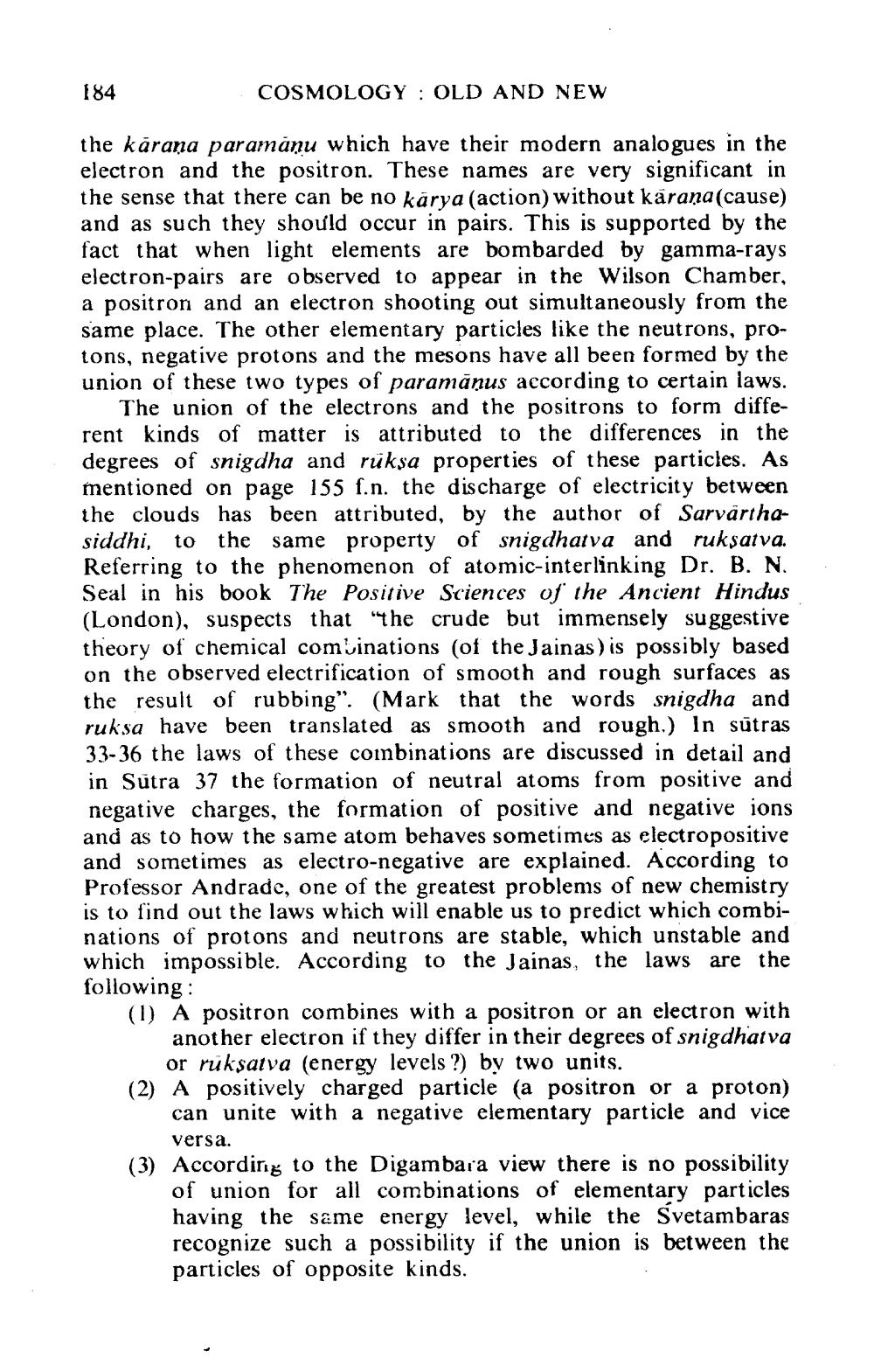________________
184
COSMOLOGY : OLD AND NEW
the karana paramánu which have their modern analogues in the electron and the positron. These names are very significant in the sense that there can be no karya (action) without karana(cause) and as such they should occur in pairs. This is supported by the fact that when light elements are bombarded by gamma-rays electron-pairs are observed to appear in the Wilson Chamber, a positron and an electron shooting out simultaneously from the same place. The other elementary particles like the neutrons, protons, negative protons and the mesons have all been formed by the union of these two types of paramāņus according to certain laws.
The union of the electrons and the positrons to form different kinds of matter is attributed to the differences in the degrees of snigdha and rüksa properties of these particles. As mentioned on page 155 f.n. the discharge of electricity between the clouds has been attributed, by the author of Sarvårthasiddhi, to the same property of snigdhatva and ruksatva. Referring to the phenomenon of atomic-interlinking Dr. B. N. Seal in his book The Positive Sciences of the Ancient Hindus (London), suspects that "the crude but immensely suggestive theory of chemical com vinations (of the Jainas ) is possibly based on the observed electrification of smooth and rough surfaces as the result of rubbing". (Mark that the words snigdha and ruksa have been translated as smooth and rough.) in sūtras 33-36 the laws of these combinations are discussed in detail and in Sutra 37 the formation of neutral atoms from positive and negative charges, the formation of positive and negative ions and as to how the same atom behaves sometimes as electropositive and sometimes as electro-negative are explained. According to Professor Andrade, one of the greatest problems of new chemistry is to find out the laws which will enable us to predict which combinations of protons and neutrons are stable, which unstable and which impossible. According to the Jainas, the laws are the following: (1) A positron combines with a positron or an electron with
another electron if they differ in their degrees of snigdhatva
or ruksatva (energy levels ?) by two units. (2) A positively charged particle (a positron or a proton)
can unite with a negative elementary particle and vice
versa. (3) Accordirig to the Digambara view there is no possibility
of union for all combinations of elementary particles having the same energy level, while the Svetambaras recognize such a possibility if the union is between the particles of opposite kinds.




